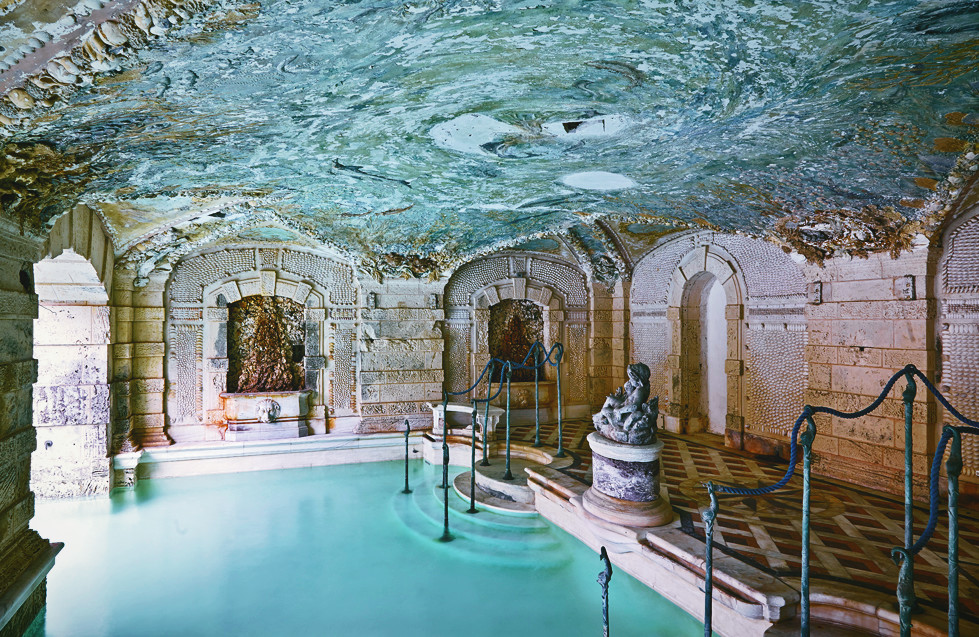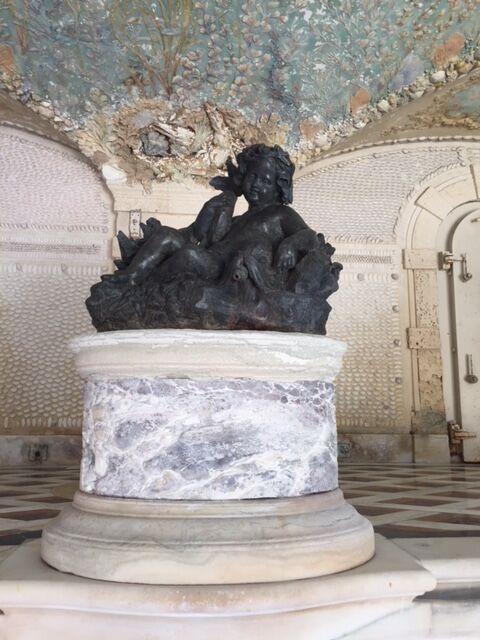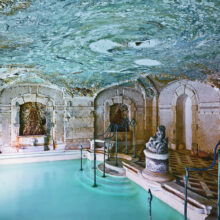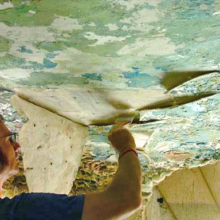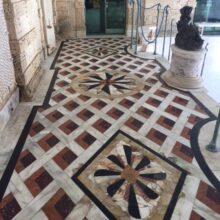Swimming Pool Grotto Protection
Vizcaya’s Swimming Pool Grotto is a captivating space on the estate, half-tucked away underneath the first floor of the Main House, the other half uncovered. The decorated grotto, adorned with antique furniture, stained-glass doors, decorative wall sconces, and a boldly patterned marble floor, is intended to make the visitor feel submerged in water. American artist, Robert Winthrop Chanler, designed this underwater fantasy with plaster casts of seashells, fish, marine plants, and coral, that once shimmered as the metallic paint reflected on the pool water.
The mural was composed of painted plaster, an unfortunate choice for Vizcaya’s sub-tropical marine environment, prone to damaging effects from natural disasters. EverGreene has worked on the Vizcaya Museum pool several times, most recently in 2021 where our team stabilized the shell wall. Stabilization on a small section of the ceiling was also performed after it fell into the pool due to damage from Hurricane Irma in 2017. We mobilized a trained technician and assistant conservator to work in preparing the poolside face of the wall to provide some stability and minimize the potential for further loss during concrete placement within the existing openings in the wall.
Conservators removed the ferrous bar in the west opening using means that minimize vibration, and after the application of a mold release, we applied a silicone rubber mold facing the areas to be filled up to approximately three feet above the pool deck. Next, we backed the mold with a reinforced plaster and wood form to both hold the rubber against the shells and provide a brace to resist the concrete placed in the wall holes. The wood was then bolted to the existing threaded hole mounts in the wall. The form was inset to allow the application of plaster over the concrete as needed to match the historic wall finish. We provided access ports as needed to allow the installation of the concrete fill to be placed in the wall and observed the placement of the concrete (completed by others) to ensure that the shell work is not damaged during this work. Finally, after the placement of the concrete, we removed the facing and mold materials, cleaned the surface, and reinstalled any shells that were loosened by the work in that immediate area.
